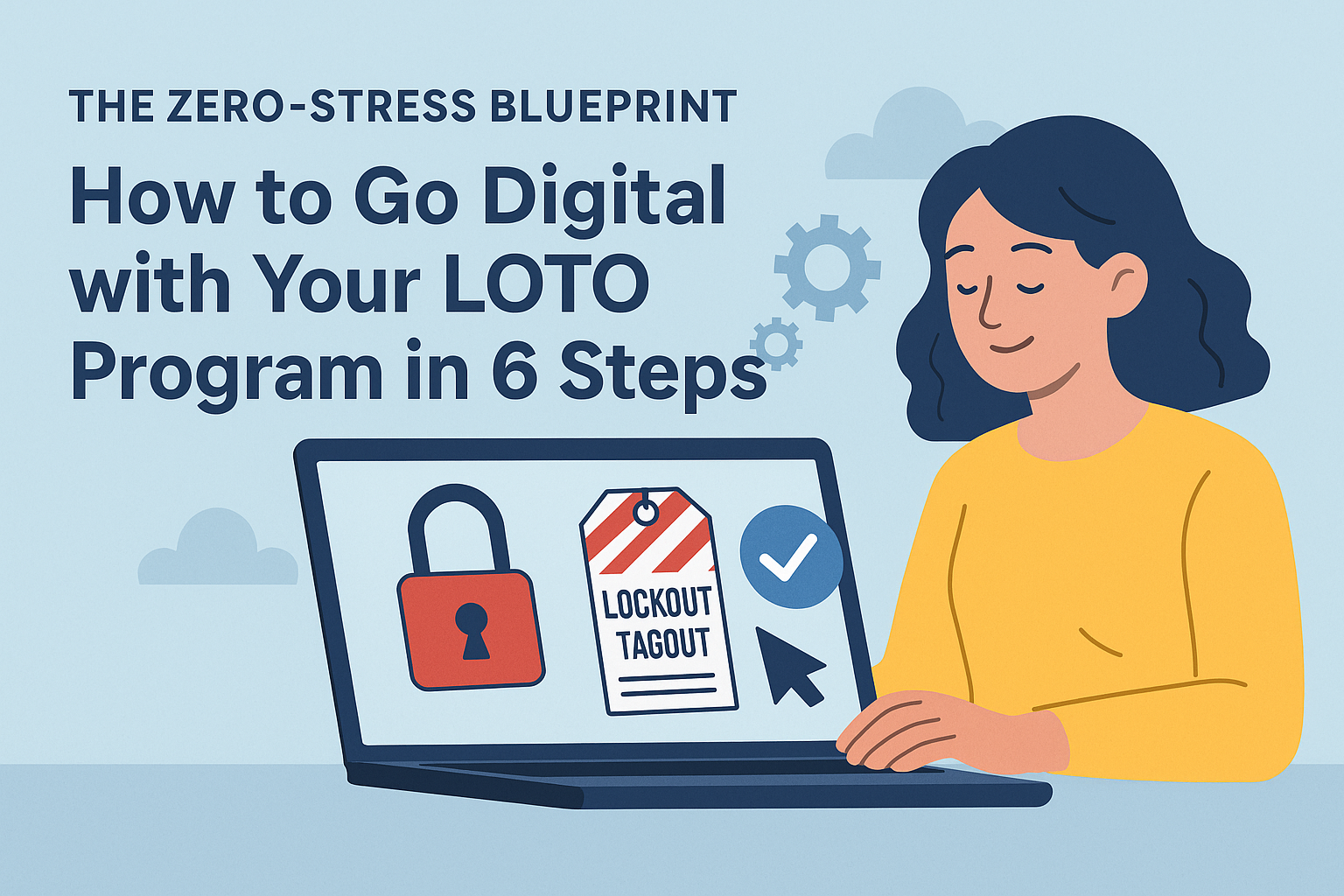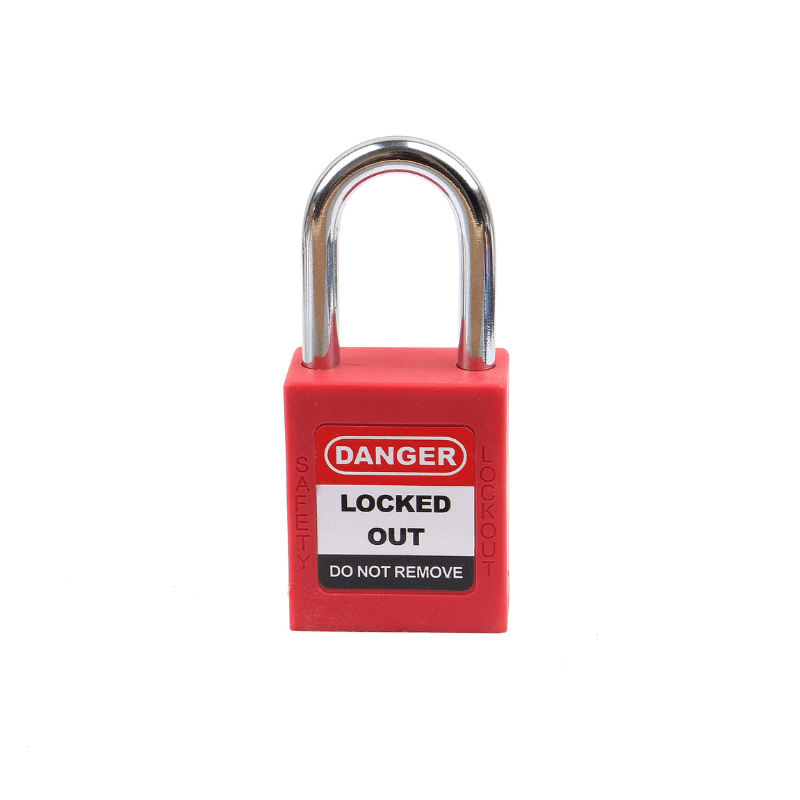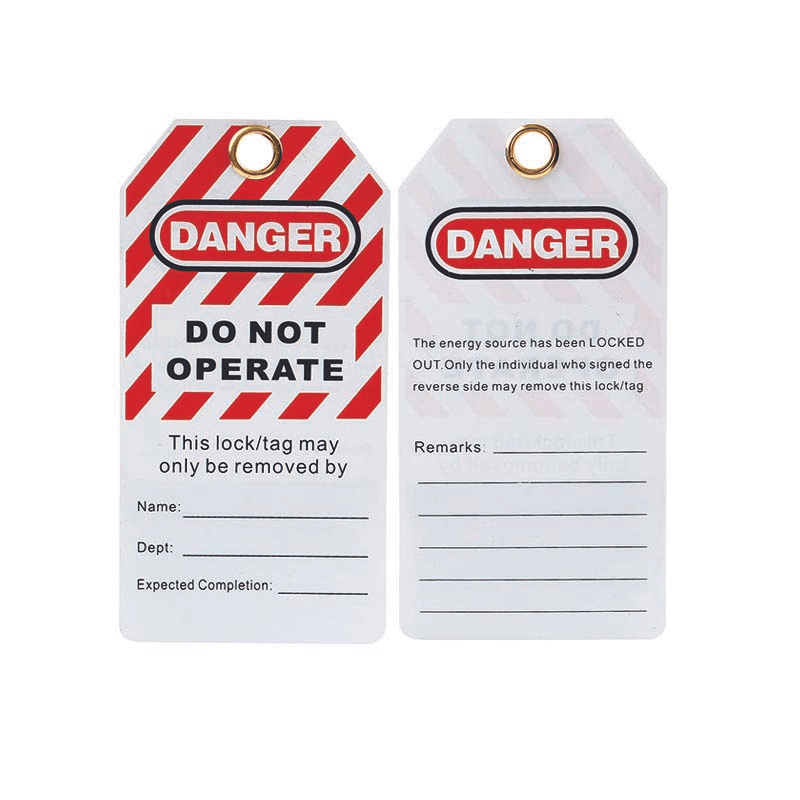Moving from a familiar paper-based Lockout Tagout system to a new digital platform can feel like a monumental task. The binders, tags, and stacks of paper are a known system, but so are its flaws: wasted time, risk of human error, and difficult audit preparation. Transitioning to a digital LOTO program is achievable and can be a smooth process with the right plan. The goal is not just to replace paper, but to build a safety program that is simpler, safer, and more efficient.
Table of Contents
- Step 1: Assemble Your "Go Digital" Team
- Step 2: Map Your Assets & Audit Existing Procedures
- Step 3: Build Your First Digital Procedures (The Pilot)
- Step 4: Train for Adoption, Not Just for Compliance
- Step 5: Go Live & Gather Feedback
- Step 6: Scale, Measure, and Optimize
- Your Journey to a Safer, Smarter Plant
Step 1: Assemble Your "Go Digital" Team
A successful rollout is a team effort. Managing this transition alone can lead to burnout and slow adoption. The first step is to create a small, dedicated team to drive the project forward. Your ideal team includes:
- The Safety Lead (Project Manager): This individual will oversee the project, set timelines, and be the main point of contact.
- The Maintenance Supervisor (Implementation Lead): This person knows the equipment and the team intimately. They are crucial for reviewing and digitising procedures.
- The Engaged Technician (Floor Champion): A respected technician who is open to new technology. Their buy-in is a powerful tool for convincing the rest of the team. They will be the first to test the system and provide real-world feedback.
Step 2: Map Your Assets & Audit Existing Procedures
You cannot digitise what you do not know. Before implementing new software, you need a clear picture of your current state.
- Inventory Your Equipment: Walk the floor with your team and create a master list of every piece of equipment that requires Lockout Tagout.
- Gather Your Binders: Collect all existing paper-based LOTO procedures.
- Perform a Simple Audit: With your team, review each procedure. Ask critical questions: Is this procedure still accurate? Is it easy to understand? Is anything missing? This exercise is vital for demonstrating the immediate need for a better system.
- Standardise Physical Devices: Before digitising, ensure your physical hardware is robust and consistent. A digital procedure is only as good as the physical lock securing the energy source. Standardise with high-quality Padlocks, clear Lockout Tagout Tags, and the correct devices for every isolation point.
Step 3: Build Your First Digital Procedures (The Pilot)
This stage turns the plan into reality and is key to building momentum. A common mistake is trying to digitise the entire plant at once. Start small. Choose one self-contained area or 5-10 essential machines for a pilot program.
Dedicated LOTO software can transform this process. Instead of writing procedures in a word processor, you build them visually and intuitively right at the equipment.
- Go to the Machine: Use a tablet or phone at the asset location.
- Create a New Procedure: Give it a clear, specific name (e.g., "CNC Machine 3 - Blade Replacement").
- Add Steps Visually: For each step of the LOTO process (e.g., "Isolate Main Breaker"), take a photo of the exact energy source. This eliminates ambiguity. A clear visual procedure requires equally clear physical markers, like our Circuit Breaker Lockouts.
- Specify Lock Points & Verification: Clearly define the isolation points and the steps required to verify a zero-energy state.
This method allows for the creation of a clear, visual, and error-proof procedure in minutes, something difficult to achieve with a paper-based system.
Step 4: Train for Adoption, Not Just for Compliance
How you introduce the software determines its success. The goal is for your technicians to want to use the new system. Focus the training on the direct benefits for them:
- No more searching for binders: The exact procedure is available on a mobile device.
- No more confusing instructions: Every step has a photo, showing exactly what to do.
- One-click shift handovers: Instantly see the status of a lockout and transfer responsibility without losing time or information, often managed through a central Lockbox.
- Less paperwork, more wrench time: Spend time on actual maintenance, not on filling out forms.
Focus hands-on training for your pilot group on a single, complete workflow: finding a procedure, executing the lockout, and signing off on it within the software.
Step 5: Go Live & Gather Feedback
Once your pilot team is trained and your first set of digital procedures is built, go live in your chosen area. For the first two weeks, actively seek feedback. Ask your Floor Champion to gather informal input. Check in with the team daily. What do they like? What is confusing? What could be better? This feedback is invaluable, making the team feel heard and building a sense of ownership over the new process.
Step 6: Scale, Measure, and Optimize
A successful pilot program creates a powerful internal case study. You will have a team of advocates, a proven process, and tangible results.
- Scale Up: Use your blueprint to methodically roll out the digital system to the rest of the facility, area by area.
- Measure Your Success: Use the software's dashboard to track key metrics. How has the time to perform LOTO changed? How many procedures have been completed? You now have real-time data to demonstrate the value of the new system to management.
- Optimize Continuously: The launch is the beginning of a smarter way of working. Use the insights from the software to identify bottlenecks and continuously improve your safety processes. This includes ensuring your physical inventory, managed perhaps on a Lockout Station, is always stocked.
Your Journey to a Safer, Smarter Plant
Making the switch from paper to digital is a transformative project that is more achievable than you might think. By following a structured plan and leveraging intuitive tools, you can lead a seamless transition that empowers your team and elevates your entire safety program. A successful digital system is built on a foundation of reliable, high-quality physical LOTO devices. The Lock Box provides the essential tools, from comprehensive Lockout Kits to individual Electrical Lockout and Valve Lockout devices, ensuring your team has the right hardware to implement procedures safely and effectively.



